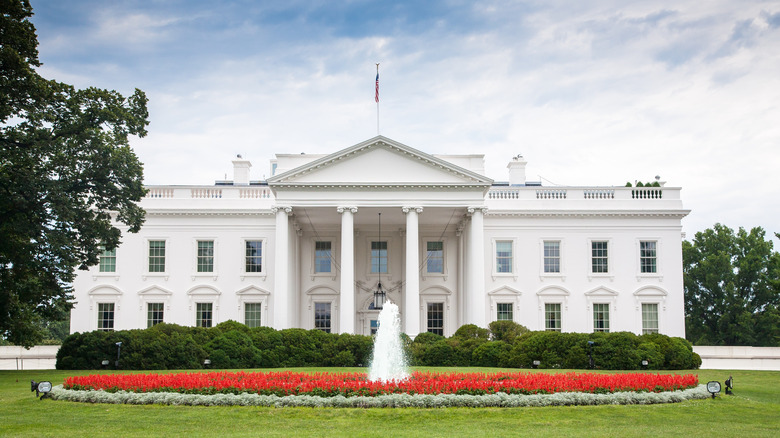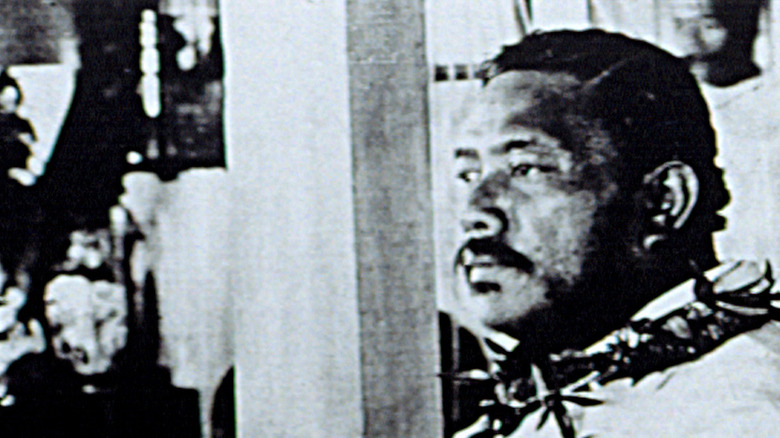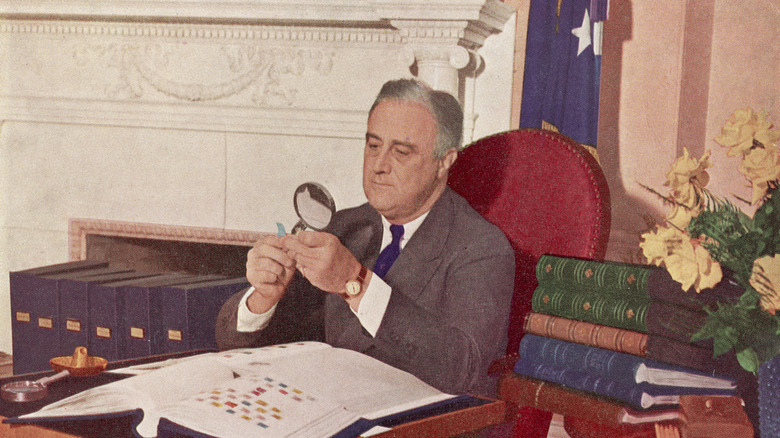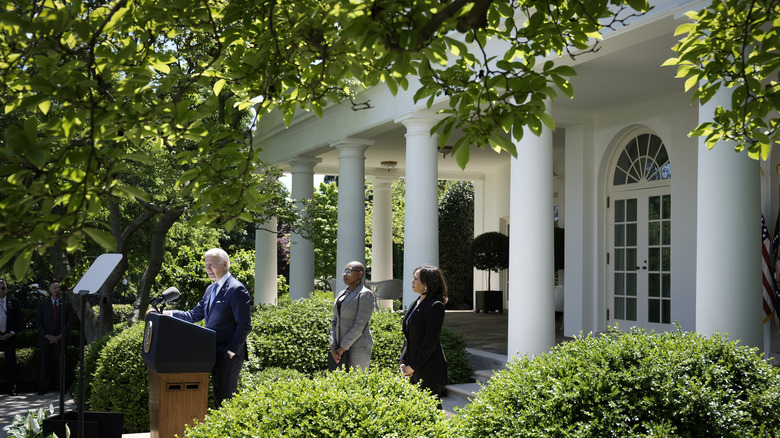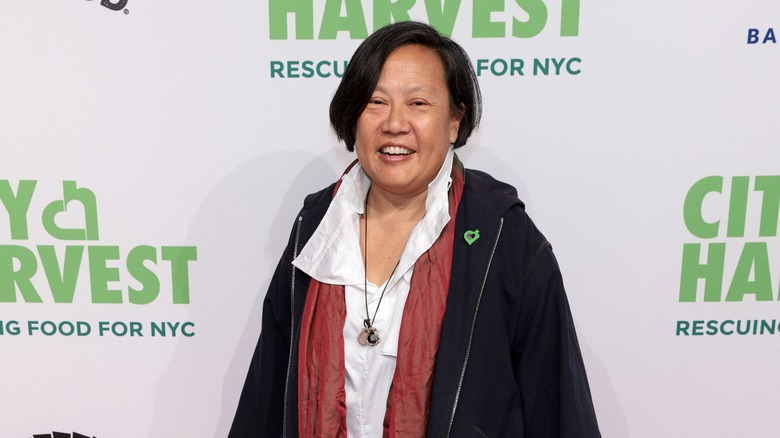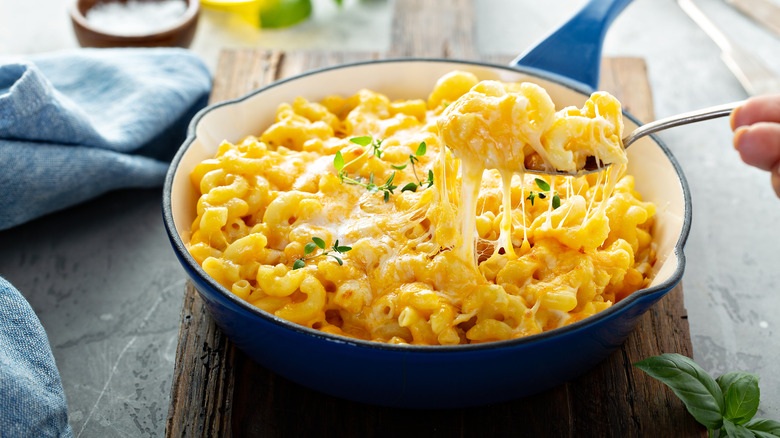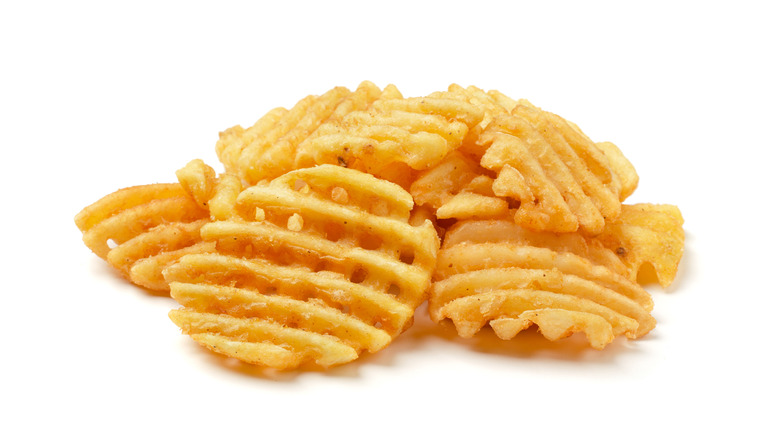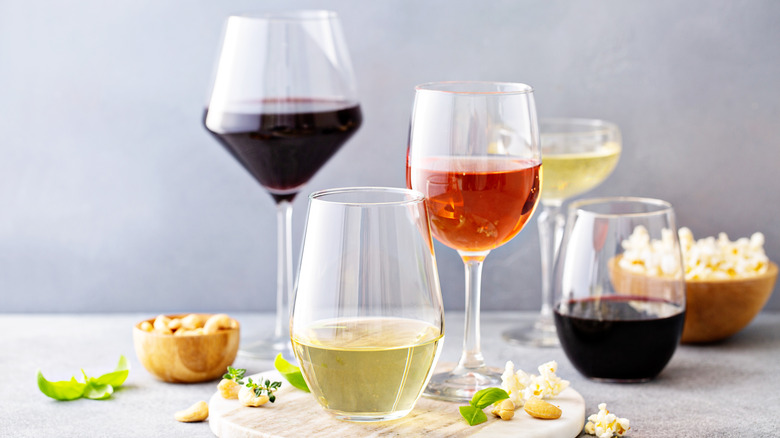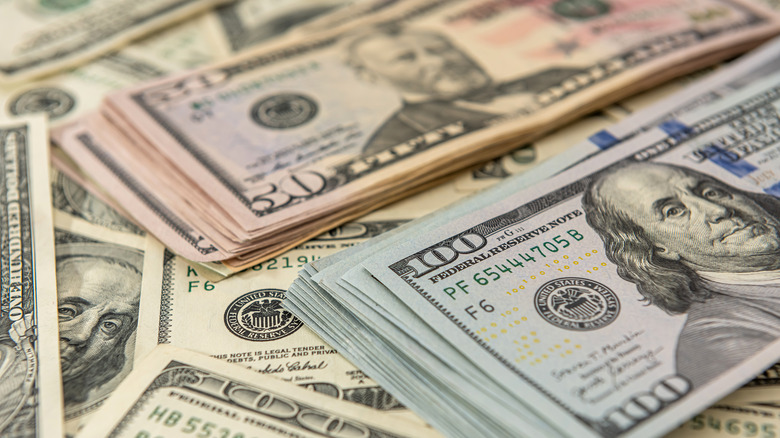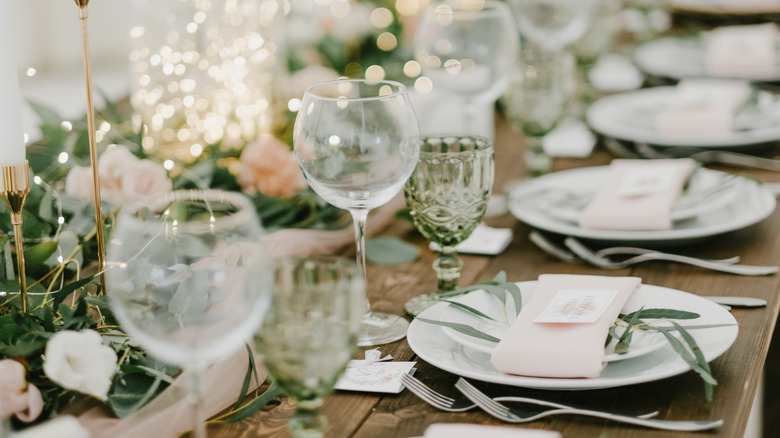What A State Dinner At The White House Is Really Like
State dinners are a fixture of presidential administrations. They're held for visiting heads of state and populated with high-ranking officials, celebrities, and high-society figures. Or at least they were before the pandemic. But while a state dinner now just warrants a brief news story, these banquets used to be much more of an event. They used to be solely about showing off the president's hospitality, but they became more politically important over time (via CNN).
A state dinner at the White House involves dining and serving rules, security clearances, political wrangling, interesting food, and unexpectedly mundane glassware amidst all the hobnobbing. Each administration puts its own spin on how state dinners are done, making each one unique and memorable. If you ever get an invitation to one, it's likely to be an amazing experience that lets you participate in an event with a storied, if relatively short, history (via the Obama Administration White House Archives). Here's what a state dinner at the White House is really like.
The first official state dinner was held in 1874, but records show that earlier administrations held them, too
Ask about the first official state dinner, and most people will point to the 1874 banquet held in honor of a visit from King David Kalākaua of Hawai'i, then called the Sandwich Islands (via The Washington Post). President Ulysses S. Grant wanted to throw a huge dinner that would (and did) amaze his guest of honor and the public. But state dinners, using that name, had already been held in the United States for various U.S. government officials, according to Smithsonian Magazine. Grant was merely the first to make the state dinner into an international shindig.
The Washington Post says that part of the change was due to how much easier travel was becoming. It was still a schlep to get to the District of Columbia in the 1870s compared to today, but prior to then, the long ocean distances that most other heads of state would have had to endure served as a deterrent to a lot of travel. King Kalākaua's trip to the U.S. was actually part of a worldwide voyage the king had decided to make, and the U.S. was his first stop. The U.S. was also not that big on the international scene before World War II, so while a dinner with the U.S. president was nice, it wasn't considered as important a function then as it is today.
State dinners used to be about glamor, but FDR turned them into a strategic political tool
When presidents first started hosting state dinners, they were all about impressing the guests. The first state dinner for King Kalākaua, while small compared to state dinners held by more recent administrations, was a grand affair at the time, with gorgeous china, crystal, flowers, and amazing food, all meant to show the visiting king a good time, per The Washington Post. By all accounts, King Kalākaua loved it.
Starting with Franklin D. Roosevelt's administration, however, the state dinner became something of a strategic political tool, according to CNN. FDR figured out that state dinners could help build alliances, such as when he invited King George VI of the U.K. to a state dinner in 1939. The state dinner and U.S. trip for the British monarch included an outing to a park where Roosevelt gave the guests hot dogs. It was part of a strategy to make the U.S. public more sympathetic to the British (via The Washington Post).
President Eisenhower used state dinners to promote diplomacy, such as the state dinner he held for Soviet leader Nikita Khrushchev in 1959. And the Carter Administration held a joint state dinner in 1979 for Egyptian President Anwar Sadat and Israeli Prime Minister Menachim Begin to honor the signing of the Camp David Accords and the finalization of the peace treaty between Israel and Egypt (via the U.S. Department of State Office of the Historian).
State dinners haven't always been held in the State Dining Room
State dinners usually take place in an officially designated State Dining Room at the White House. In 1902, the State Dining Room was enlarged, and it's been remodeled several times as different administrations have moved into the White House, according to the White House Historical Association. Many state dinners have been and are held elsewhere as well. Sometimes this is out of necessity, such as during a major reconstruction project at the White House during the Truman Administration when state dinners had to be held at hotels instead (via Smithsonian Magazine).
Other presidents have held state dinners in different locations just because they could. The Obama Administration held several state dinners in locations such as an outdoor tent, the East Room, and the Rose Garden (via the Obama Administration White House Archives). Per CNN, Lyndon B. Johnson held an unofficial first state dinner just after John F. Kennedy's assassination when he hosted West German Chancellor Ludwig Erhard on his (Johnson's) Texas ranch, complete with barbecue. Betty Ford decided to locate a July 1976 state dinner for Queen Elizabeth and Prince Philip in a covered tent in the Rose Garden, complete with a floor that came in handy when heavy rain started up during the dinner, according to the Gerald R. Ford Presidential Library & Museum. Betty Ford said that the outdoor tent allowed them to have more guests than would fit into the State Dining Room.
Your meal might be prepared by a guest chef
The White House has its own team of chefs who cook all of the meals served in the White House, from midday snacks for the First Family to the elaborate menus served at state dinners. The team consists of the Executive Chef and the Executive Pastry Chef, who supervise several additional chefs and assistants. Cristeta Comerford has been the White House Executive Chef since 2005, but in late 2020, Susan Morrison became the Executive Pastry Chef, marking the first time that both Executive Chefs have been women, according to Politico. The additional chefs in the White House have included Andre Rush, an Army veteran known for his advocacy for veterans with PTSD — and for his 24-inch biceps that earned him the nickname "Tiny" (via Bored Panda and Food & Wine).
However, if you attend a state dinner, you may have a meal prepared by a guest chef. While previous administrations had brought in chefs for special functions, such as the culinary diplomacy program started during the Clinton Administration, using guest chefs for state dinners started during the Obama Administration, with such stars as Marcus Samuelsson cooking for the prime minister of India, per The New York Times). When President Barack Obama hosted a state dinner for Chinese President Xi Jinping, the meal was prepared by guest chef Anita Lo, and during the Obamas' last state dinner, held for the prime minister of Italy, Mario Batali was the guest chef (via Time).
Menus may reflect the guest's country's cuisine, American tastes, or both
State dinners take at least six months to plan, according to a White House blog post. Not only must the guest list be prepared and a guest chef hired, but the menu itself has to be meticulously planned. The dishes may reflect the cuisine of the guest of honor's country, American tastes, or a mix of both; Foreign Policy reports that during the Clinton Administration, First Lady Hillary Clinton wanted to showcase regional American flavors such as field greens and corn. The influence of the visiting country's cuisine may show up as a combination of flavors in a recipe or as a more conceptual combination, such as when First Lady Melania Trump chose to serve American wines at a 2018 state dinner for French President Emmanuel Macron to honor the friendship between the two countries (via Food & Wine).
Dishes have ranged from elaborate gourmet recipes to macaroni and cheese. In fact, according to the book "Mac & Cheese" by Ellen Brown, when Thomas Jefferson held what passed for a state dinner in 1802, he served macaroni and cheese (or pasta in butter and parmesan), a recipe he had picked up in Paris. And sometimes the food just isn't any good. According to "What She Ate" by Laura Shapiro, Franklin D. Roosevelt's first state dinner had such uninspiring food that a writer for The Washington Post suggested going to a coffee shop afterward (via Smithsonian Magazine).
You'll often find the president's favorite food at the banquet
Adding to the difficulty of planning a state dinner menu is the president's desire to have a favorite food as part of the feast — or to avoid certain foods completely. Foreign Policy took a very deep dive into presidential meals and found that state dinner menus often would be influenced by the president's tastes. For example, Harry S. Truman had watermelon pickles during one of his state dinners with then-Princess Elizabeth of the U.K., and George H.W. Bush never, ever served broccoli. The Clintons were determined to serve lower-fat meals given the push at the time to reduce fat consumption, so their state dinners eliminated beef.
A notable exception to this occurred during Trump's state dinner for Macron in 2018, when Melania Trump did not try to include Trump's favorite foods, which are mainly things like fast food, into the menu. However, as Foreign Policy notes, there have been two presidents who served waffle fries, tastefully renamed potatoes gaufrettes, at a state dinner: John F. Kennedy and Lyndon B. Johnson.
If you attend a state dinner at the White House now, you might end up using rented glassware
With all the security that surrounds the White House and its guests, you'd think keeping track of everything in the White House and ensuring everything needed is available would be a given. That's not the case with the crystal glassware used at state dinners, however. CNN reports that back in the days of George W. Bush's administration, the White House began running short of the amount of glassware needed for drinks at large functions like state dinners. Yet, for whatever reason, each First Lady since then has decided not to buy new crystal stemware that could be used at state dinners. Even Melania Trump, who was given the suggestion to purchase stemware made in her birthplace of Slovenia because of that country's reputation for producing excellent crystal, opted not to make the purchase.
The situation has gotten so dire that during the Trump Administration, the White House had to rent glassware (via The Times). So far, that seems to be what the Biden Administration plans to do as well. As one unnamed person told CNN, some people considered it a really big problem to have guests at the White House drinking from glassware that anyone could get from a catering company.
State dinners can cost over half a million dollars, but they don't always require that much money
If the thought of seeing rented glassware at a state dinner made you think these things were held on a rather tight budget, think again. The state dinner held for Indian Prime Minister Manmohan Singh on November 2009 cost $572,187.36, according to CBS News, which asked the State Department for calculations for five state dinners held during the Obama presidency. The next most expensive was the May 2010 state dinner held in honor of Mexican President Felipe Calderon at $563,479.92, and after that was the January 2011 state dinner held for Chinese President Hu Jintao. That one cost $412,329.73.
State dinners can be so elaborate and costly that at one point, CBS News said, Congressman Darrell Issa asked for an accounting of just how funds were being spent for these banquets. He gave Secretary of State Hillary Clinton two weeks to provide extensive details about the expenses but received no information from either her or the State Department.
You'll have to eat relatively quickly and ask for seconds if you want them
If you really like a certain dish served at a state dinner and want seconds, you'll have to ask; The Toledo Blade reported in 2012 that one of the rules White House chefs have to follow at state dinners is that seconds are never offered, but they are given if a guest requests them. However, you'll have to ask quickly; another state dinner rule is that all the courses have to be served within a strict 55-minute schedule, with each dish being introduced at a specific time. While the rules hopefully don't require guests to finish what's on their plate before each course comes out, that does mean that if you want seconds, you'd better ask fast.
Whether or not you like the food, you can rest assured that everything has been screened for security purposes. According to an interview in the Washingtonian with former White House Executive Chef Walter Scheib, all kitchen personnel have a level of security clearance that allows them to work unsupervised by Secret Service agents while in the White House and all the food in the White House has to be screened by these chefs.
